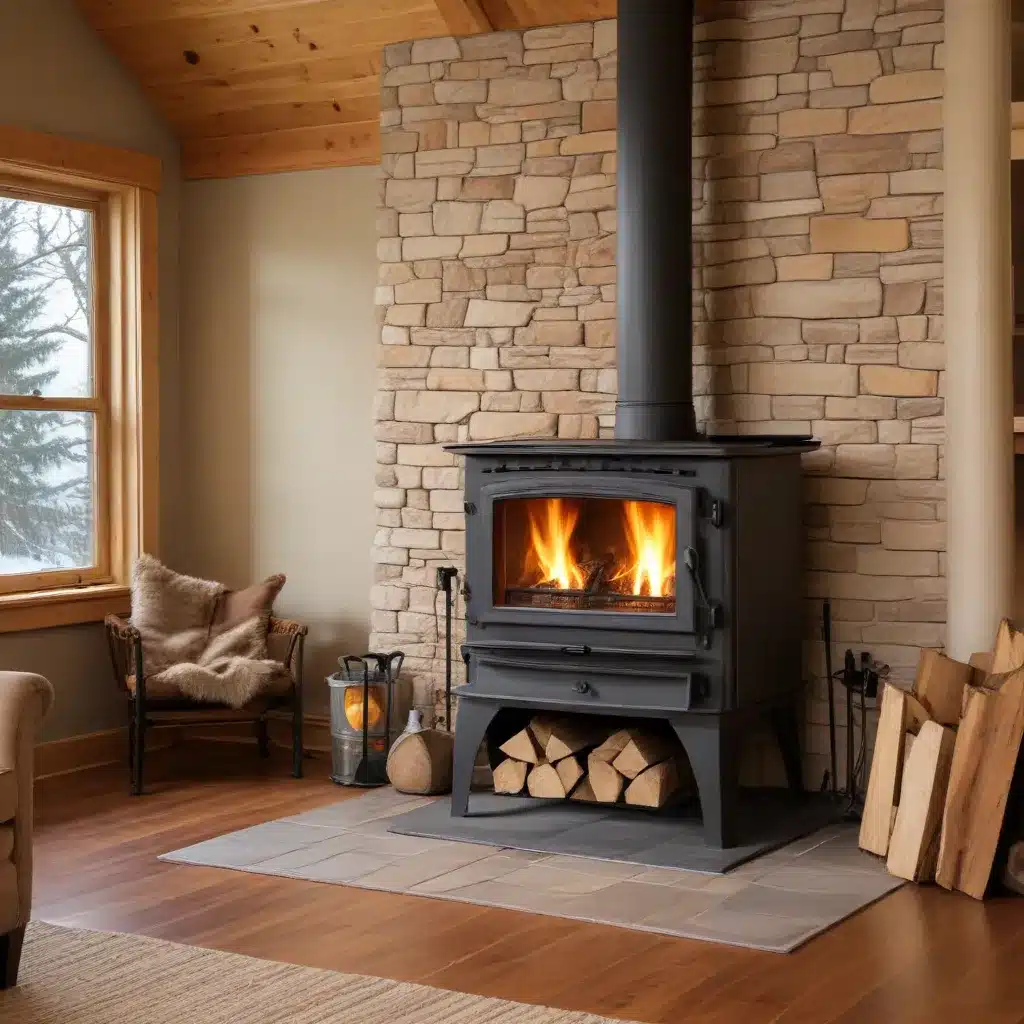
As a seasoned expert in wood stoves and heating solutions, I’m thrilled to share practical tips and in-depth insights to help you get the most out of your wood stove and create a cozy, energy-efficient living space. Whether you’re a new homeowner or a seasoned wood stove enthusiast, this comprehensive guide will equip you with the knowledge to maximize your heating potential and achieve optimal warmth throughout your home.
Optimizing Wood Stove Placement: Strategize for Efficient Heat Distribution
The placement of your wood stove is crucial in determining how effectively it heats your living space. Let’s explore some key factors to consider when positioning your wood stove:
Identify the Ideal Location
The most strategic location for your wood stove is typically in the central area of your home, where it can efficiently distribute heat to the surrounding rooms. Avoid placing it in isolated corners or on exterior walls, as this can result in uneven heating and limit the stove’s ability to warm the entire space.
Tip: If possible, position your wood stove in a room with an open floor plan, as this allows the heat to circulate more freely and reach a larger area.
Consider Airflow and Circulation
Proper airflow is essential for ensuring your wood stove’s heat is evenly distributed throughout the room. Strategically place the stove in a location that allows for unobstructed airflow, avoiding areas with furniture, walls, or other obstacles that could impede the circulation of warm air.
Tip: Utilize fans or blowers to help circulate the warm air, but be mindful of safety and maintain a safe distance between the wood stove and any additional heating devices.
Maximize Heat Reflection
To amplify the heat output of your wood stove, consider incorporating heat-reflecting surfaces around it. Positioning the stove in front of a masonry wall or installing a heat shield behind the stove can help reflect the warmth back into the room, increasing the overall efficiency of your heating system.
Tip: Experiment with different heat-reflecting materials, such as polished metal or stone, to find the optimal solution for your space.
Optimizing Room Layout for Efficient Heating
The layout of your room can significantly impact the effectiveness of your wood stove in heating your living space. Here are some tips to optimize your room layout for maximum warmth:
Create an Open Floor Plan
An open floor plan allows for better air circulation and heat distribution. By removing or minimizing walls and barriers, you can create a more seamless flow of warm air throughout the room, ensuring that the heat generated by your wood stove is utilized to its full potential.
Tip: If you’re unable to completely open up your floor plan, consider installing strategically placed vents or ductwork to improve air circulation.
Arrange Furniture Strategically
Thoughtfully arranging your furniture can greatly enhance the efficiency of your wood stove’s heat output. Position larger pieces, such as sofas and armchairs, in a way that allows the warm air to circulate freely around them, rather than blocking the airflow.
Tip: Avoid placing furniture directly in front of the wood stove, as this can create “cold spots” and limit the heat distribution.
Utilize Thermal Mass
Incorporating thermal mass elements, such as stone, brick, or concrete, can help store and slowly release heat, creating a more consistent and comfortable heating environment. Consider adding a masonry hearth or surrounding the wood stove with thermal mass materials to enhance the overall heating efficiency.
Tip: Experiment with different thermal mass materials and placements to find the optimal solution for your space and heating needs.
Maintaining Fireplace Efficiency: Tips for Optimal Performance
Proper maintenance and care are essential for ensuring your wood stove operates at peak efficiency and continues to provide reliable heating for your home. Here are some essential maintenance tips:
Regular Cleaning and Inspection
Regularly clean your wood stove’s interior, including the firebox, glass, and flue, to ensure optimal airflow and prevent buildup of creosote or other combustible materials. Additionally, have your wood stove professionally inspected and serviced at least once a year to identify and address any potential issues.
Tip: Consult your wood stove’s manufacturer for specific cleaning and maintenance recommendations to ensure the longevity and performance of your appliance.
Fuel Selection and Storage
The type and quality of wood fuel you use can significantly impact the efficiency and heat output of your wood stove. Opt for well-seasoned, dry hardwoods, such as oak, maple, or birch, and store your wood in a dry, sheltered location to maintain its optimal moisture content.
Tip: Avoid using green or unseasoned wood, as it can lead to increased creosote buildup and reduced heat output.
Proper Burning Techniques
Mastering the art of building and maintaining a wood fire can greatly enhance the efficiency of your wood stove. Use the appropriate amount of kindling and larger logs, and adjust the air intake to ensure a clean, efficient burn that maximizes heat output while minimizing smoke and emissions.
Tip: Consult resources or seek guidance from experienced wood stove users to learn proper fire-building techniques.
By implementing these strategies for wood stove placement, room layout optimization, and comprehensive maintenance, you’ll be well on your way to maximizing the heating potential of your wood stove and creating a cozy, energy-efficient living space.
For more information and resources on wood stoves, fireplaces, and sustainable heating solutions, be sure to visit https://woodstoveheaters.com/. Our team of experts is dedicated to helping homeowners like you achieve the ultimate in comfort and efficiency.


